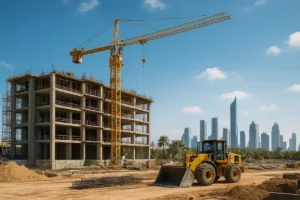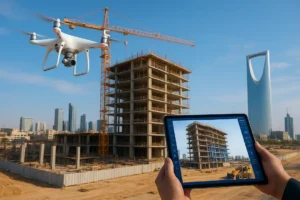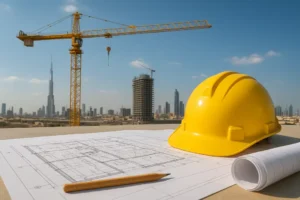Water-Smart Construction in Saudi Arabia
In a region where water resources are precious and scarcity is a real challenge, water-smart construction becomes more than a trend — it becomes a necessity. In Saudi Arabia, construction projects must increasingly adopt methods that reduce consumption, reuse water and design buildings that truly manage every drop. This article explores how construction in Saudi Arabia can embrace water-smart design: what it means, why it is urgent, how it works, and the real-world examples and strategies that developers, architects and engineers can adopt.
What is Water-Smart Construction?
Water-smart construction refers to building design and construction processes that aim to conserve water, reuse existing water streams, and reduce wasteful consumption throughout the life of a building. It is about integrating water efficiency into construction, rather than treating it as an add-on. This includes:
-
Using low-flow fixtures, dual-flush toilets and water-efficient plumbing.
-
Harvesting rainwater and storing it for non-potable uses (irrigation, toilets) during building operation.
-
Recycling greywater (from showers, sinks) for reuse.
-
Designing the building’s layout, plumbing and landscaping to minimize water use and maximize efficiency.
-
Incorporating smart monitoring systems (sensors, IoT) to track leaks, consumption and enable optimisation.
In the context of Saudi Arabia and the Middle East, water-smart construction takes on heightened importance because of regional water scarcity, high demand and rapid construction growth.
Why Water-Smart Construction Matters in Saudi Arabia
Water scarcity & regional context
Saudi Arabia is one of the countries most challenged by water scarcity. According to recent market research, the “smart water management” solutions market in Saudi Arabia is valued at about USD 1.2 billion, driven by urbanisation and the need for efficient water systems.
Moreover, the region’s construction boom means that if water efficiency is ignored, buildings will consume vast amounts of water — both for construction and operation. The article “Why Smart Water Design must begin at construction” emphasises that the design and construction phases offer the greatest potential for water savings.
Thus, for construction in Saudi Arabia, integrating water-smart principles is essential for sustainability, cost control, regulatory compliance and resilience.
Benefits of water-smart construction
-
Lower operational water costs: By reducing demand and utilising reuse systems, buildings save on bills and resource supply.
-
Environmental impact reduction: Conserving water reduces energy used for treatment and transport and protects local aquifers and ecosystems.
-
Regulatory & reputational advantage: In Saudi Arabia’s evolving building sector, incorporating advanced water systems helps meet emerging sustainability credentials and supports the region’s goals under initiatives such as Saudi Vision 2030.
-
Resilience: In arid climates, water-smart buildings are better prepared for droughts, supply disruptions or rising regulation.
Challenges
-
Up-front cost: Some water-smart systems (harvesting, sensors) require higher initial investment compared with standard construction.
-
Technical/operational knowledge: Ensuring correct installation, maintenance and occupant behaviour is crucial. Mistakes or neglect can reduce savings.
-
Integration complexity: To gain full benefit, water-smart strategies must be embedded in design, not tacked-on. That requires coordination among architects, MEP engineers, landscapers early on.
Pros and Cons of Water-Smart Construction
Pros
-
Significant water savings and reduced utility costs over building lifespan.
-
Lower environmental impact and improved sustainability credentials.
-
Better alignment with regulations, consumer expectations and regional water-scarcity realities.
-
Potential for better building performance and occupant comfort (e.g., landscaping, cooling systems adjusted for water efficiency).
Cons
-
Higher initial cost of installation (harvesting tanks, smart sensors, dual-flush systems).
-
More complexity in design and operation — requires integrated planning and maintenance.
-
Dependence on occupant behaviour and maintenance for full benefit. If systems aren’t used or maintained, savings drop.
-
In extremely arid climates, rainwater harvesting may yield limited volumes, so it must be paired with other measures.
Conclusion
Water-smart construction offers a powerful way to design buildings in Saudi Arabia that truly conserve every drop of water. By integrating water-efficient plumbing, rainwater harvesting, greywater reuse, smart irrigation and monitoring systems during the construction and design phases, developers can create buildings that perform sustainably in an arid environment. The benefits — from cost savings to environmental impact reduction — are significant, though they come with necessary planning, investment and coordination.
As construction in Saudi Arabia continues to expand and modernise, embracing water-smart construction is not just wise — it is becoming essential. By acting now, the industry can ensure that buildings not only meet their functional goals but also respect one of the region’s most precious resources: water.



